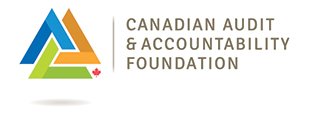
Gender inequalities are still deep-rooted in all countries and societies. They are the most pervasive, systemic, and structural of all inequalities—and they affect us all. For example, when girls and women do not have equal access to resources and equal opportunities to participate in decision making, their families, communities, and countries feel the significant social and economic costs. Audits can play a key role by determining whether governments are meeting their commitments, achieving planned results, and putting in place policies and programs that work.
Here are some things you should know when conducting an audit of gender equality.
Your audit of gender equality could generate substantial economic benefitsDespite being among the global leaders in gender equality, Canada still has much to gain. A 2017 report from the McKinsey Global Institute found that advancing women’s equality in Canada has the potential to boost the country’s annual GDP by $150 billion by 2026 a 0.6-percent increase in annual GDP. By making well-targeted recommendations for improvement, auditors can play a role in helping to generate economic benefits. |
|
Governments need audits of gender equality to ensure that they are meeting their obligationsThe Government of Canada has ratified the United Nations’ Convention on the Elimination of All Forms of Discrimination against Women. It has also signed the Beijing Declaration and Platform for Action, which recommends that governments “seek to ensure that before policy decisions are taken, an analysis of their impact on women and men, respectively, is carried out.” These international agreements create obligations and responsibilities for all signatory countries. Furthermore, the Canadian Charter of Rights and Freedoms guarantees equality before the law for every individual, without discrimination based on sex. The Constitution Act, 1982, Part II, guarantees Aboriginal and treaty rights equally to male and female persons. Additionally, many governments (federal, provincial and territorial, and municipal) have laws requiring employers to achieve employment equity to correct disadvantages faced by women and other designated groups. There is therefore ample legislation that auditors can use to assess compliance with gender equality requirements. |
|
Your audit can ensure that data needed to achieve gender equality is available and reliableThe use of measurable and quantified goals, targets, and indicators is at the heart of achieving gender equality. It is critical to priority setting, evidence-based decision making, and transparency in reporting. In particular, gender-disaggregated data is essential. More specifically, targets and indicators are used by governments to:
Audits of gender equality should therefore assess:
|
|
All audits can have a line of enquiry on gender equalityAudits can focus solely on gender equality, emphasizing the capacity and success of governments to achieve this goal. But they are not limited to that. Gender equality is a cross-cutting issue that can lead to improvements in the way a host of programs are designed and delivered, and results are achieved. Auditors can look at the program or activity audited with a gender lens and ask: Does it have aspects or dimensions that are gender sensitive? Examining these could result in important audit findings for legislators and governments. |
Liked it?
There is much more to learn in our publication Practice Guide to Auditing the United Nations Sustainable Development Goals: Gender Equality and in our Auditing Gender Equality course.
See more Audit Tips


